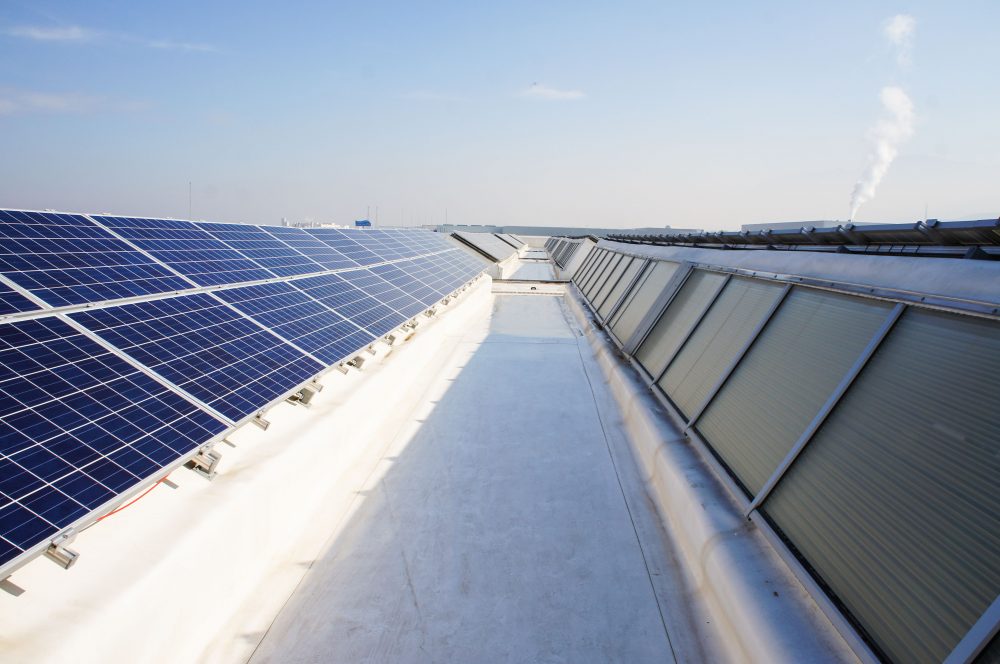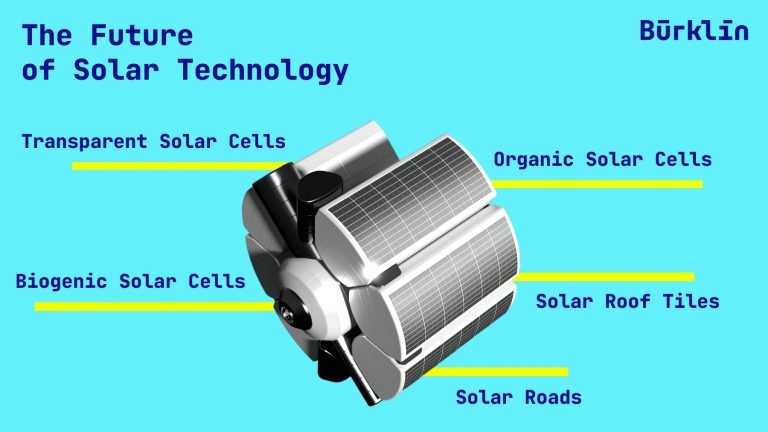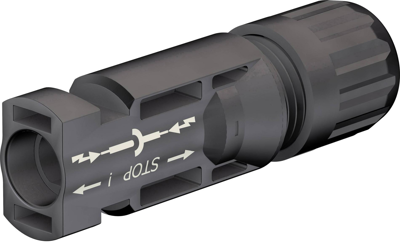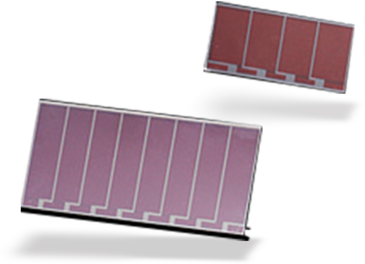
Solar Technology in Focus
In view of the ongoing energy transition, the change from fossil fuels to renewable energy sources is becoming more and more important. Electricity from sustainable energy sources such as water, wind or sunlight has already been an integral part of energy generation for several years. What distinguishes solar technology as an environmentally friendly technology for energy generation? Which applications are already available today, and which are likely to shape the future? It is high time to get to the bottom of these and other questions.
What is solar technology?
In short, solar technology uses the power of the sun. Various technical aids and devices use solar radiation to generate energy free of charge and in an environmentally friendly manner – usually in the form of electrical power or heat.
Important: Even if solar energy itself is free of charge, there are of course costs for the installation and maintenance of the solar system. Since the energy supply is subject to both diurnal and seasonal fluctuations through the use of the sun, energy storage is an important component of solar technology.
So much for the basics of solar technology, but where is solar energy used specifically? Learn more about the different uses!
Basics of photovoltaic technology: how do PV systems work?
Photovoltaics is a way of generating energy or a method of harnessing solar energy. The word photovoltaics (= PV for short) is composed of the Greek word for “light” (= photos) and the one for the unit of measurement of electrical voltage – volts.
Solar technology is based on the ability of certain materials to convert light into electricity. As early as 1839, the French physicist Alexandre Edmond Becquerel observed the photoelectric effect. This can be divided into three related processes: the external photoelectric effect, the internal photoelectric effect and photoionization.
The internal photoelectric effect can be further subdivided into photoconduction and the photovoltaic effect, which enables the conversion of light into electrical energy.
Simply explained: the photovoltaic effect
The photovoltaic effect makes it possible to transform solar energy into electrical energy. The principle behind it is quite simple: photons* from the sun’s rays release electrons from their chemical bond. The distribution of the existing negatively charged electrons changes and electric charge is generated. (*explanation follows)
Explanation of terms: In physics a photon is the elementary excitation of the quantized electromagnetic field. In other words, a photon is a building block of electromagnetic radiation. Photons provide energy and momentum.
How is a solar cell constructed?
A solar cell consists of three layers: The main component is formed by two silicon layers. An n -doped layer (for example, phosphorus is added to the layer) and a p -doped layer (with boron added) – the same basic material that transistors and diodes are made of. The chemical element “Si” has four electrons.
Phosphorus is added to the upper part of the silicon cell. This chemical element has five electrons. One electron of the phosphorus atom is “too much” and freely movable. Boron is added to the lower solar cell layer. This element has three electrons and thus a free docking site for one electron – this free site is also called a “hole”.
The electron of the phosphorus atom can now migrate to the boron. This happens until all electrons are equally distributed. If this is the case, the third layer forms in the silicon of the solar cell, in which all the balanced boron atoms can be found. This is called the boundary layer. Electric charge is generated by the movement of the individual electrons. Due to the movement and distribution of the electrons, two poles are formed. A plus and a minus pole.
Different types of solar cells and how they work
In addition to conventional silicon-based solar cells, there are many other types that differ in terms of material, structure and efficiency:
- Monocrystalline solar cells: These consist of a single, high-purity silicon crystal. They are particularly efficient at converting sunlight into electricity and can be recognized by their uniform color and bevelled edges. Monocrystalline cells are predestined for space applications due to their high efficiency.
- Polycrystalline solar cells: In contrast to monocrystalline cells, these consist of several interconnected silicon crystals. They are cheaper to produce, but have a slightly lower efficiency.
- Thin-film solar cells: These cells are produced by vapor deposition of photovoltaic material onto a substrate. They are more flexible and lighter than crystalline cells, but have a lower efficiency. The materials used include cadmium telluride (CdTe) and copper indium gallium selenide (CIGS). Thin-film cells are well suited for portable devices or uneven surfaces due to their flexibility and lower weight.
- Organic photovoltaic cells (OPV): OPV cells use organic molecules or polymers to absorb light and convert energy. They offer advantages in terms of weight, flexibility and transparency, but are still at an early stage of commercial development.
- Perovskite solar cells: These cells use perovskite structures – a special type of crystal – and are known for their high efficiency and ease of manufacture. They are considered a promising alternative to traditional solar cells, but still face challenges in terms of their long-term stability and environmental compatibility.
Possible uses of solar energy
The sun is an unlimited resource and energy source. But how does the technology that uses solar energy actually work? The power of the sun is used in the following areas:
Electricity production through photovoltaics
Solar cells convert sunlight directly into electrical energy. This can either be consumed in private households or fed into public power grids. The way they work is based on the principle of the photoelectric effect. According to this, semiconductor material has a higher electrical conductivity under the influence of light.
Solar thermal energy
Solar thermal energy deals with the conversion of solar energy into heat – both for the purpose of heating water and to support the heating system. Instead of solar cells or modules, solar collectors are mounted on the roof. Due to the glass house effect, the so-called heat transfer fluid is heated and flows through the coated absorber. The generated heat is transferred to the heat exchanger or storage tank.
Solar architecture
To increase the energy efficiency of buildings, solar energy can also be used in a very targeted way in terms of construction: In solar construction, the natural resources of the site are integrated into the planning in the best possible way. The result is a so-called solar house or Sonnenhaus in Germany.
What does the future of solar technology look like?
Important to know in terms of the latest solar technology: The more the relevant technologies develop, the more effective solar technology will become – in terms of both product characteristics and costs. In the future, the use of renewable energy will be applied in more and more areas. It will gradually displace previously used forms of energy generation, such as those based on gas or oil.
Ready for a journey through time? Below are five examples of what the future of solar technology could look like:

- Transparent solar cells: Largely transparent, transparent solar cells make the range of applications not only larger, but also more attractive. Areas of application would be the screen of a smartphone or the windshield of a car.
- Organic solar cells: Made on a carbon basis, organic solar cells are movable and thus can be used in a variety of ways. For example, for textiles or accessories, but also for windows.
- Biogenic solar cells: A solution that works even with low solar radiation would be biogenic solar cells made from living organisms. However, their development is still in its infancy.
- Solar roads: Solar roads are being tested in China, France, the Netherlands, and the USA, with the first promising applications in parking lots.
- Solar roof tiles: Reduction of CO2 emissions, tax benefits and lower electricity bills – like state-of-the-art solar panels, the solar roof tiles of the future will also offer these advantages. In terms of appearance, however, they beat current products by a long way.
Bürklin Elektronik: Supplier and user of solar technology
We know what we are talking about! True to this motto, Bürklin Elektronik is also contributing to the energy transition with the solar system installed on its company roof. The 2,640 solar modules (275 Wp each at 992x1650x32 mm per module) generate an annual yield of 950 kWh/kWp.
Based on its own positive experience, Bürklin Elektronik is also pleased to be able to offer its customers a comprehensive range of products for the construction (solar cells, cables, connectors, and couplings), safe operation (solar fuses) and monitoring (e.g.: reference and feed-in meters) of photovoltaic systems. Take a look at the online store right now!








